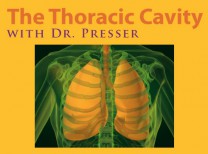Quality versus quantity has always been a dilemma for physicians, but even more so in today’s medical environment. Health care providers now have major decisions to make which will have long and far-reaching effects for how you, the patient, will be treated.
A primary care physician’s practice serves approximately 2,000 to 4,000 patients. A doctor is mandated to treat his patients to the very best of his ability, but medicine is a service industry and there are a limited number of hours that a physician can dedicate to caring for patients.
And, so, what is the answer? How can the physician solve the quality-quantity dilemma?
A steadily increasing number of physicians are attempting to incorporate both boutique and traditional medicine under a single practice. The premise underlying the boutique concept is to accept a limited number of primary care patients. Of these patients, a small number are transitioned into the boutique milieu and would receive extended and enhanced health care services for additional fees. This model appears to be more advantageous to physician and patient alike, rather than attempting to convert the entire primary care service model into that of a boutique practice. Patients are initially offered the choice of which model they wish to follow.
Wellness-conscious Americans favor longer appointment times; same day, evening and Saturday appointments; total care coordination as well as preventive and proactive diagnostic screening. This population is beginning to rely upon complementary health professionals such as therapeutic massage specialists, personal fitness trainers and relaxation modalities including yoga and meditation to address acute as well as chronic health problems. They rely on wellness and life coaches who, along with their medical team, support them on their journey to optimum health. All this can be accomplished through the boutique medical model with a wellness component.
But what is the cost? It has to be affordable to be available to the majority of patients. How can this be accomplished? There has to be a balance reached between physicians’ needs and patients’ resources. This will vary from practice to practice and will, necessarily, take some research and negotiation on the part of the patient. The cost to the patient should reflect the anticipated needs and expectations of that individual.
The days of “the old country doctor” are gone. Medicine, by necessity, has become big business. The rapidly increasing trend of boutique primary care practices illustrates the “supply and demand” principle.
The boutique practice model can provide the physician with the opportunity to offer quality care. Extended wellness services and a realistic financial commitment can provide the patient with access to an individualized health care program that is implemented under the direction of their preferred physician. For many doctor-patient partnerships, this is a win-win situation that brings a personalized level of service back in to modern health care.














































Comments (0)